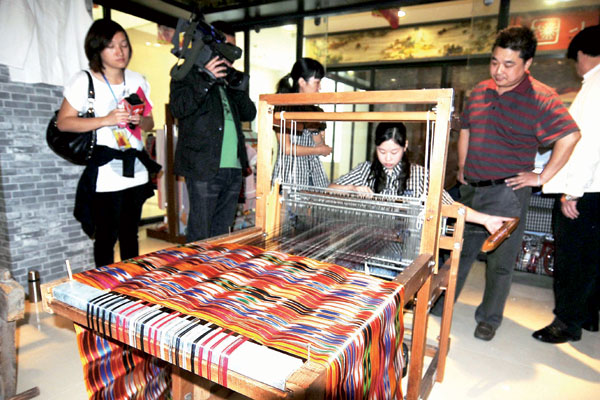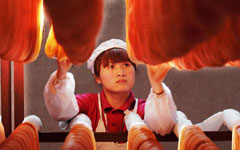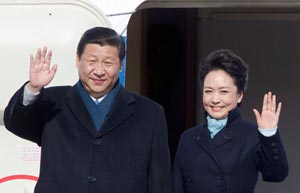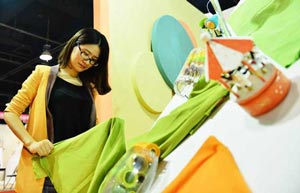A very long and winding silk road
By Yan Yiqi (China Daily) Updated: 2014-02-17 07:23
|
 |
|
Silk has been a pillar industry of Hangzhou for more than 1,300 years. The city is said to contribute a quarter of the world's silk supply. Photos provided to China Daily |
"The famous silk brands are in European countries such as France and Italy. Chinese companies have long done OEM (original equipment manufacturer) production for those brands. We have done the bulk of the work but earned the least money.
"For example, you will pay more than 3,000 yuan ($510) for a Hermes-branded silk scarf, but how many people know that that scarf comes from China and that we sell it for 100 yuan or less?"
|
 |
|
 |
Like Wensli, many of the other silk makers in Hangzhou are OEMs, although many also produce brands that are well-known domestically.
Wu Haiyan, dean of the School of Design of the Chinese Academy of Art in Hangzhou, echoes Tu in talking of the limitation of the country's silk industry.
"Down the ages, Chinese silk has had a magnificent reputation, but barely any Chinese silk company appears in the global showroom. They are limited by textile techniques, their inability to do research and development and their fashion sense. That means they have had to play second fiddle, being content to be OEMs for foreign companies."
In the bleak period of the 1990s, many silk companies in Hangzhou folded. There were serious questions about whether the industry there could survive, Wu says.
One of those that kept its head above water was Hangzhou Dujinsheng Silk Weaving Mill, one of the oldest silk companies in the city. It was established in 1921 and was soon winning widespread acclaim. It was awarded a gold medal at the World Expo in Philadelphia in 1926, it says. At its peak the company employed more than 3,000 people, with more than 60 designers and 600 weaving machines, says Ke Daocun, the company's chief engineer.
Ke, 72, has witnessed the company's many ups and downs in his 40 years of working for it.
"It was one of the largest manufacturing companies in Hangzhou in the 1980s but, since the 1990s, things have gone downhill."
At its lowest point it had just 300 workers and no more than 10 designers - and only 18 machines, he says.
"They say traditional manufacturing industries will eventually die, but I don't think that time has arrived for silk."
|
 |
 |
- NHTSA says finds no 'defect trend' in Tesla Model S sedans
- WTO rare earth ruling is unfair
- Amway says 2014 China sales may grow 8%
- President Xi in Europe: Forging deals, boosting business
- CNOOC releases 2013 sustainability report
- Local production by Chery Jaguar Land Rover this year
- Car lovers test their need for speed in BMW Mission 3
- China stocks close mixed Monday

















